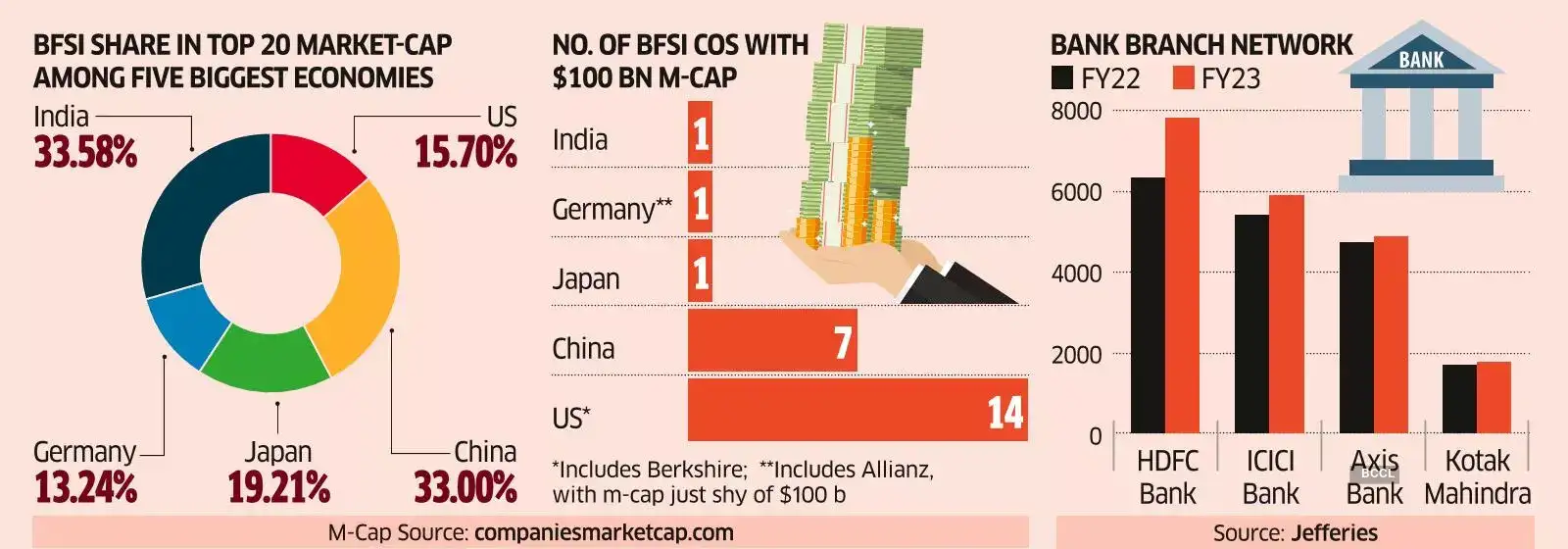Opinions differ on the duration of the current weakness in the HDFC Bank stock. Relative to public-sector lenders, the gauge for which climbed four times in the past three years, the erstwhile gold standard in Indian banking has turned in a relatively subdued performance on the bourses. Relative valuations and uncertainties surrounding the lender’s eventual merger with its home-financing parent weighed on the stock.
While underwriting across the industry has strengthened over the years after a spate of write-offs and the enactment of a bespoke bankruptcy law, commercial banking in India remains very much a function of nurturing relationships that accrue fat dividends only with presence on the ground.

It is true that Covid and the fintech revolution have caused banking technology to leapfrog years and seemingly obviate the need for branch visits, but the key to building a stable base for liabilities – or deposits – lies in taking doorstep banking to locations that are looking for the financialisation of savings but have few credible vehicles to do so.HDFC Bank appears to have focused on doing this just right over the past few years, according to the latest report from Jefferies. With a 40% climb in the footprint where the presence of private-sector peers such as ICICI Bank and Axis Bank is minimal, HDFC Bank is taking the battle to public-sector lenders for deposits, armed with a wider suite of products and breadth of service that state-run banks will find difficult to offer.
“Our zipcode-level analysis shows that HDFC Bank has added branches in areas with limited competition from private banks. In fact, 45-50% of new branches are in markets where leading private banks, such as ICICI Bank and Axis are not present,” said the Jefferies note.
Merger Synergies, Earnings
The benefits of the merger and deposit-garnering efficiency of the newly opened branches are expected to kick in over the next 18 months.”Over the next three years, we expect HDFC Bank to deliver 16% CAGR in earnings growth aided by synergies from mergers – expansion of home loan network to the branches and cross-selling of financial products,” said Jefferies.
Deposit mobilisation per branch at HDFC Bank runs ahead of peers, guaranteeing access to less expensive funds incrementally as branch networks mature and deposits migrate from smaller rival banks to the market leader.
Relative to the size of the gross domestic product, Indian banking, financial services, insurance and investment companies appear to be adequately represented. In comparison with other sectors, BFSI companies in India appear to have the requisite market capitalisation heft.
BFSI’s share in the combined market value of India’s top 20 companies is more than a third.
This is roughly equal to the share finance companies from mainland China have in their home market, and is vastly greater than the respective shares of the US, Japan, and Germany that together make up the five biggest economies on the planet.
Balance Sheet Size
However, this seemingly adequate relative BFSI share hides the size of individual entities that must have sufficient balance sheet strength to garner the finances required for large upcoming investments in a country aiming to pull ahead of Germany and Japan by the end of this decade.
This is where HDFC Bank scores over others. Even after the recent 10% decline in the quarter gone by, the first in which mortgage-lender HDFC was subsumed into the bank it had spawned three decades ago, the market capitalisation of HDFC Bank dwarfs all other Indian financial companies, with a weighting of nearly a seventh on the Nifty.
Its nearest rival ICICI Bank, with about an 8% weighting, has a market capitalisation of just about half that of HDFC Bank. In doing the basics right, which includes registering a brick-and-mortar presence beyond the big cities, HDFC Bank appears to have done the spadework for leading the next leg of India’s financial growth.











